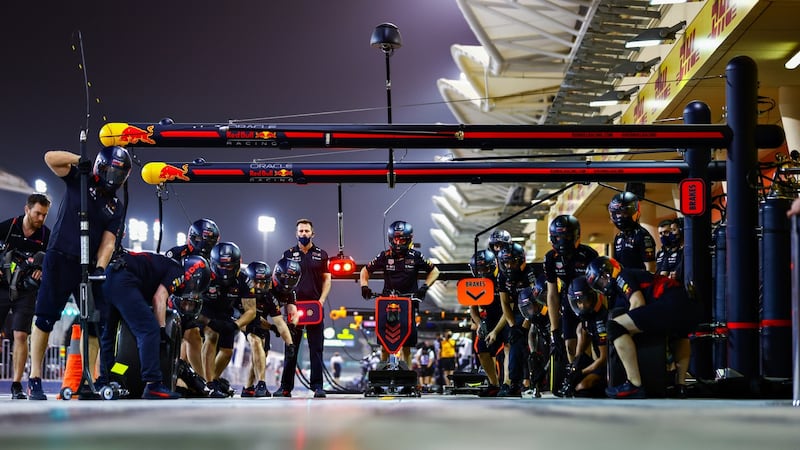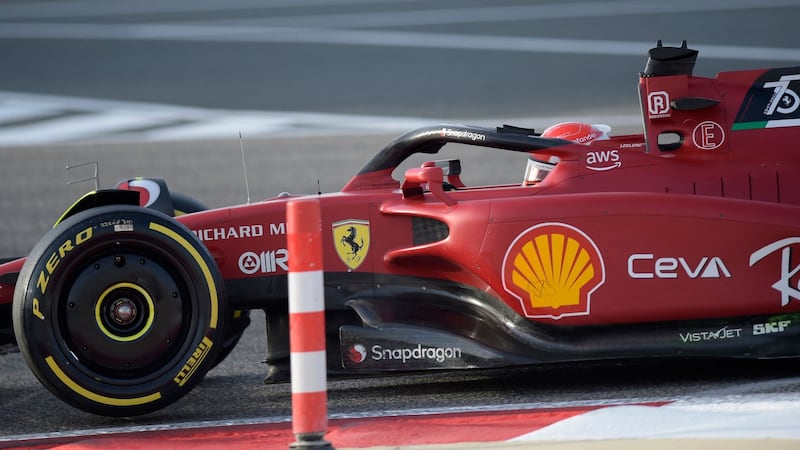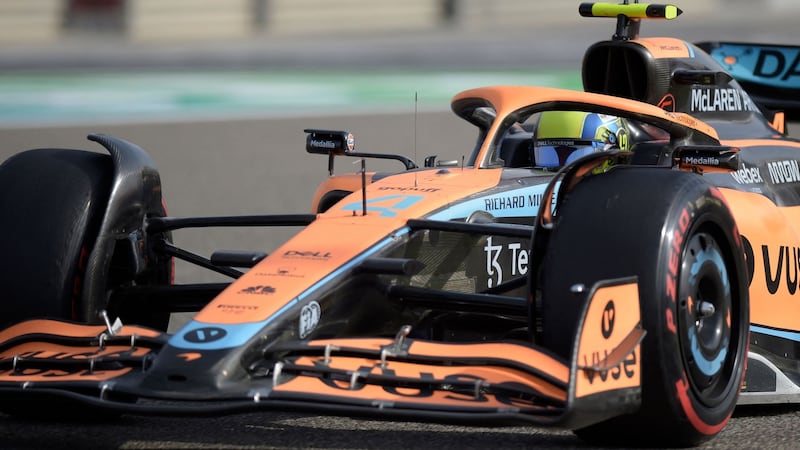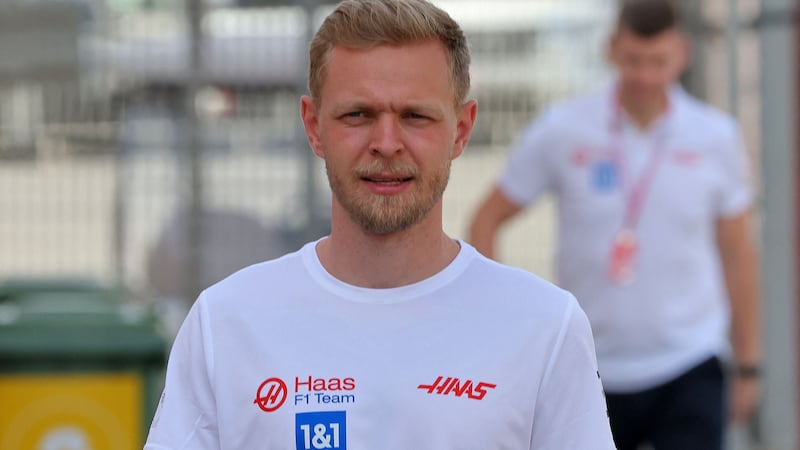Generally speaking, you don’t expect to hear much mention of aquatic mammals when discussing Formula One, but the key to on-track success in 2022 may well be taming the porpoise effect.
No, we're not expecting to see Lewis Hamilton nor Max Verstappen trying to coax a dolphin to leap through a hoop. 'Porpoising' is the name for an aerodynamic effect triggered by F1's new regulations. The 2022 cars are new from tip to tail (engines apart) and reflect an entirely new approach to aerodynamics laid down by the sport's governing body, the FIA.
In an attempt to change the way the cars use aerodynamic downforce to stick themselves to the track, the FIA has, effectively, mandated a turning back of the regulations clock to the late 1970s. Back then, cars used ‘venturi tunnels’ under their bodywork to generate colossal downforce, effectively suckering the cars to the tarmac.
This so-called ‘ground effect’ was banned on safety grounds in the early 1980s, but has returned for 2022 because - in theory - its use will allow the cars to run more closely together, encouraging greater overtaking and more competitiveness between cars and teams.
And the dolphin, sorry, porpoise? Well, porpoising happens when the car’s ground effect tunnels are so effective that they literally suck the car down to the point where the chassis touches the track surface. When that happens, it shuts off the airflow through the tunnels, the ground effect is lost, and the car springs back upward on its suspension. Then the tunnels start to work again, as the car rises, and the whole cycle starts again.
You can see it happening. Watching the cars at the end of the Bahrain Grand Prix track's long main straight, many were bouncing up and down on their suspension as if the car were driving over a particularly rough patch of Irish country road.
You can see the drivers’ helmets shaking and bouncing in sympathy, so the combination of stirred suspension and shaken driver will clearly bring performance limitations. You can eliminate this porpoising motion easily enough - raise the car’s ride height, but doing so means you then lose out on downforce, so the car will not be as fast through the corners.

Of the 10 teams competing for the 2022 F1 championship, Red Bull appears to have things most under control. The RB18 car, with its powerful Honda engine and driven by 2021 world champion Max Verstappen (and his team-mate Sergio Perez) looked serene and smooth while others bounced and scraped their way around the desert track in pre-season testing. It looked fast, too - indeed Red Bull set the fastest time in testing, with Verstappen saying that the car is quick without him or the team needing to stretch themselves too far. That will be an ominous warning to the competition.
Mercedes all at sea
Mercedes, which sees impressive youngster George Russell move from Williams to join seven-time champ Lewis Hamilton, looked all at sea. The W18 car, with the sides of its bodywork so slimmed-down that they appeared to be almost not there at all, looked vicious to drive over Bahrain's bumps, porpoising violently at the end of the main straight.

Mercedes has won eight consecutive constructors’ championships, so it would be a surprise - even a shock - if the team were not competitive this season, but it clearly has significant work yet to do to tame a difficult, possibly recalcitrant car. Indeed, Hamilton himself has said that the team simply isn’t in a position to win yet, but rivals are dismissing that as mind-games, pointing out that Mercedes often hides its true form in pre-season tests.
Looking in far better shape is Ferrari. The Italian legend has had a difficult couple of years, but seems to have hit the 2022 ground running. The F1-75 car (its name celebrating 75 years of Ferrari road cars) looks smoother by far than the Mercedes and if not quite as outright fast as the Red Bull, then potentially quick enough to compete.

With its young, talented, and hungry-for-wins driver lineup of Charles Leclerc and Carlos Sainz Jnr, the Scuderia - which returns to an evocative blood-red colour scheme this year - should at last be in the hunt for wins again.
McLaren’s deputy
What of McLaren? The orange cars looked good and quick in the first pre-season tests at Barcelona, but had a more torrid time in Bahrain, struggling with braking issues.

Aerodynamically, McLaren seems to have a better handle on the porpoising issue than anyone but Red Bull, but during the Bahrain test, its seven-time Grand Prix winning driver Daniel Ricciardo tested positive for Covid-19, and there is now some doubt as to whether he will be well enough to race alongside his team-mate, Lando Norris, this weekend. If not, and ominously for Ricciardo, his fellow Australian hot-shoe Oscar Piastri - who has wowed with his performances in lower-ranking races - stands ready to deputise.
Realistically, it is those four teams who will be at the sharp end of Formula One in 2022. The shake-up in rules has possibly opened out the competitive landscape somewhat, but it would take something of a miracle - or at least an unusual race weekend - for one of the remaining six teams to step up to the top of the podium.
Of those six, it's probably Aston Martin which has the best chance. Originally formed in 1991 as Jordan, the Silverstone-based squad has had more owners than Lionel Messi has had training sessions, but it is now backed by the considerable financial might of Aston Martin owner Lawerence Stroll.
It remains to be seen whether having Stroll's son, Lance, as one of the team's drivers is an advantage or hinderance (Stroll can be quick, but with emphasis on the 'can') but with four-time world champion Sebastian Vettel in the other car, and with that car looking solid around through both pre-season tests in Barcelona and Bahrain, it could be Aston Martin which is the team most likely to capitalise on any mistakes by the top-four.
Alonso in the pack
To do that, though, it will have to contend with Alpine and Alpha Tauri. Both teams are bristling with talent. Alpine, owned by Renault, has often underperformed in recent years, but with the none-faster two-time champ Fernando Alonso back for a second comeback season, there will be few valid excuses for any underperformance in 2022. Alpha Tauri, neé Scuderia Toro Rosso, and before that Minardi, is actually owned by Red Bull, and runs under the name of that company's high-end clothing offshoot. It has rapid drivers in the shapes of Pierre Gasly and Yuki Tsunoda, but the car hasn't looked great in testing, too often squandering speed in mid-corner understeer.
At the back of the grid, it's likely to be once again a fight between Alfa Romeo (Italian-badged but Swiss-based, and formerly known as Sauber), the American Haas team, and Williams - these days something of a shadow of its former multiple-championship-winning self.
All three teams seemed to have solid enough performance during the tests, with Alfa Romeo arguably the weakest. All three have talented driving rosters - Alfa Romeo has poached Valtteri Bottas from Mercedes, while Williams has resurrected the career of former Red Bull driver Alex Albon. Either squad would need major upsets to befall the front-runners to get a whiff of a podium. Then again, stranger things have happened.
Haas is possibly the darkest of dark horses for the 2022 season. The team actively suspended work on its 2020 and 2021 cars to better prepare for the big rule change this year, and the car has looked neat, simple, and reasonably quick all through testing. The big upset for Haas has been political - last year, it unwisely welcomed in Russian sponsorship from chemical firm Uralkali.
Oligarch money
That company is owned by Russian oligarch Dimitri Mazepin, who essentially paid the team to allow his son - Nikita - to clog clumsily around at the back of the grid for a season. Mazepin Jnr proved an unpopular figure in the paddock - not least for displays of ugly misogyny on social media, but also for generally whinging about his own lack of performance and some spectacularly dangerous driving on-track at times.
That sponsorship (and any chance of holding a Grand Prix in Russia this, or any other, year) came to a sudden end with the Russian war against Ukraine. With Daddy Mazepin having unpleasantly close ties to Vladimir Putin, Haas scrapped the sponsorship and Jnr Mazepin's drive, amid much legal rancour.

Happily, the team seems to have performed better since, recalling one of its 2020 drivers, Kevin Magnussen, to race alongside Mick Schumacher, son of the only other seven-times world champion. Can Haas - which now runs a prominent American flag on the flank of the car -translate better politics into better performance?
We’ll know when the red lights go out in Bahrain, this weekend.












